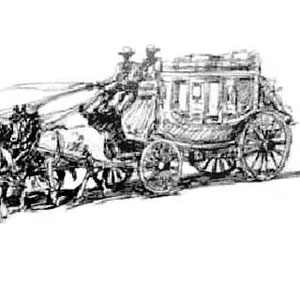Early American Period
(1848 – 1869)

- In 1848, gold was discovered at Sutter’s Mill beginning the Gold Rush period of California history. Within a year tens of thousands of Forty-Niners were to invade the California gold fields, overwhelming the traditional Californio culture in the northern portion of the state.
- By 1850, the region’s population had increased ten-fold. California enters the union as a free state with John C. Fremont becoming one of the state’s first two U.S. senators. Andres Pico, the other Campo treaty signer, eventually became a state legislator.
- In California, the Californio rancho economy continued into the mid-1860s. Demand for beef in the Northern California gold fields enriched many of the large Californio ranchos. A combination of drought, a smallpox epidemic that ravaged the rancho Native-American working class and competition from improved strains of beef cattle imported from the eastern U.S. ended Californio rancho influence.
- The Butterfield Overland Mail Company was awarded the nation’s first transcontinental mail-and-passenger route at $600,000 per annum by an act of Congress in 1857.
- The Campo de Cahuenga, located on the El Camino Real, became a Butterfield Stage Station in 1858.
- The Route had two eastern terminals on the Mississippi River at St. Louis and Memphis with the forks converging at Fort Smith, Arkansas. The stage line ran a southern route through Oklahoma, Texas, New Mexico, Arizona and Southern California. The route turned north, heading to Los Angeles and ending at the Western Terminal in San Francisco.
- The Butterfield Route was over 2,700 miles in length (the longest in the world) with the first east-to-west run lasting 23 days and 23 hours. The fare to travel the one-way distance was set at $200.
- Butterfield Overland Stage service lasted from 1858 until the outbreak of the Civil War in 1861.
- The Stage line was an outstanding success offering reliable service for the 2.5 years of its existence.
- During the Civil War the Campo became an encampment for Union soldiers.
- In 1869, Lankershim and Van Nuys acquired the southern half of The Valley.